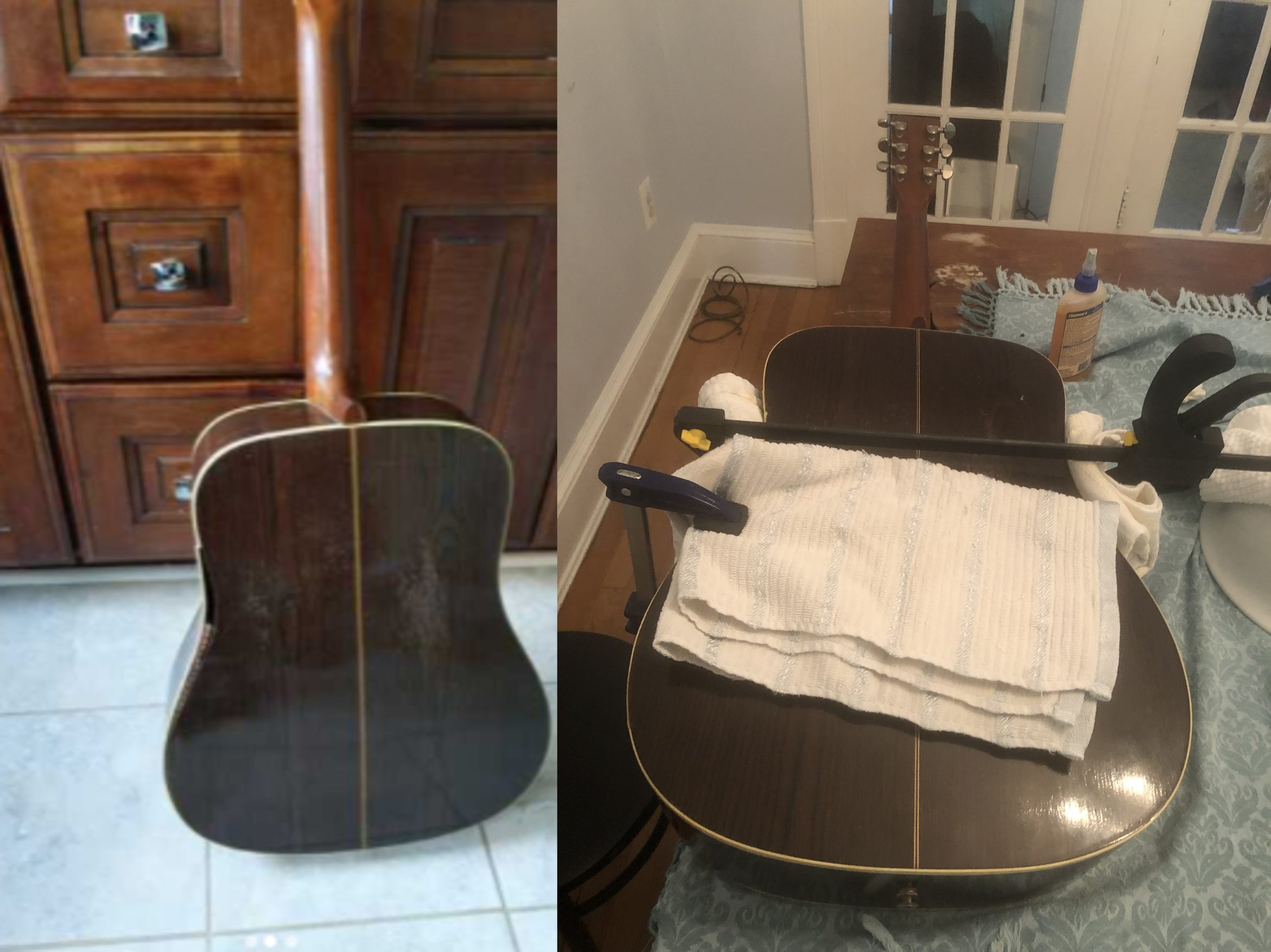There is no joy like the joy of fixing something. I know this because I finally fixed something. A guitar, no less. Like, fixed it fixed it. The instrument came to me with a big-ass crack that was growing bigger before my eyes. But with lotsa luck and more wood glue, I brought it back to life. I’ve been strumming and smiling all week. I can’t remember feeling this much pride about anything.
Finishing any job brings on the good feels—a story, for example. People like me take up typing for a living and keep at it in no small part because of how good finishing a story feels. It’s a drug! And away from the keyboard, I surely like looking at my lawn as soon as I’m done mowing it. Lawn pride is so real.
But fixing, I can now attest, is even better than finishing. It’s finishing on steroids. And there’s nothing like guitars for me. For decades I’ve hoarded rock implements like doomsdayers hoard canned goods. I try telling myself I'm not materialistic, but my basement, overflowing with instruments and amps and speakers and pedals, exposes me as a fraud. I’m basically a cat rescuer of musical toys. I love everything I have. And I want more.
That bad attitude is what brought me to acquire my latest guitar against all common sense. I’d responded to an online ad for an acoustic guitar that was in “used condition” and “could use repair.” One photo in the ad showed a crack, but on my phone it didn’t seem like anything that would render it unplayable. Plus the make and model, an acoustic Simon & Patrick Rosewood, were incredibly attractive at the giveaway price ($40) this thing was going for. (Another guy’s trying to get $1000 for his.)
But when I met the seller and first laid eyes upon the guitar, it hit me that the words I’d read and photos I’d seen didn’t match up with the actual product. The crack that seemed dismissably small on a little screen looked like a canyon in person. The seller explained with some embarrassment that the guitar was left behind by an old roommate, after taking a “big hit” that caused its rosewood back to pop out and the binding to crack, leaving the instrument’s usually hidden innards, known as the bracing, exposed for all to see. My first thoughts were, “This thing is really fucked up!” and, “So THIS is what being on Tinder is like!”
But my default cat-rescuer mode reassumed control. I gave him $40.
When I got home I noticed the outward pressure of the bracing was causing the wound to get wider every time I picked up the guitar. If this guitar didn’t get help, stat, it would be reduced to a worthless splinter pile. But the only guitar tech that I’d used for the last several years had closed up shop last month to move to Ireland.
I had never personally done any work on an acoustic guitar more complicated than turning a truss rod to adjust the height of strings. But these were desperate times. If this thing was going to be saved, I was going to be the one to save it. I noticed that despite the “big hit” it had suffered all the wood was still present, and when I simultaneously pushed in the sides and bottom the huge crack disappeared and the guitar looked whole again.
I hurried over to the local hardware store and bought a pair of big clamps and got out a big tub of wood glue. I globbed glue all over the bracing like gravy on mashed potatoes and stuffed folded up rags between the clamps and the guitar sides to protect the wood from being dented when the clamps were screwed tight. Then I watched in amazement as the glue dripped to all the places I’d hoped it would, and the cloths molded to the shape of the guitar as the clamp tightening commenced and distributed the pressure from the clamps exactly as I would have dreamed. My methods were more gluthier than luthier. But they worked! The instrument had returned to its original shape by the time the tightening was done.
Now all I could do was go to bed and hope nothing moved.
I got up at sunrise to check my work and the good news kept coming. The glue had taken as I lay sleeping, and the crack was still gone when I removed the clamps. By noon I’d restrung the guitar and tuned it up and was ready to take a test drive. I strummed hard, and the guitar didn’t blow up. Few sounds have ever brought me more happiness than my first chord on the repaired guitar. Such is the way of one who fixes things.
I spent the next few hours playing the opening riffs to guitar-based geezer classics—“Ohio” and “Communication Breakdown” and “There She Goes”—and just feeling good about life. I sense I’ll be chasing that sensation for a while. For now, I better go mow the lawn.






